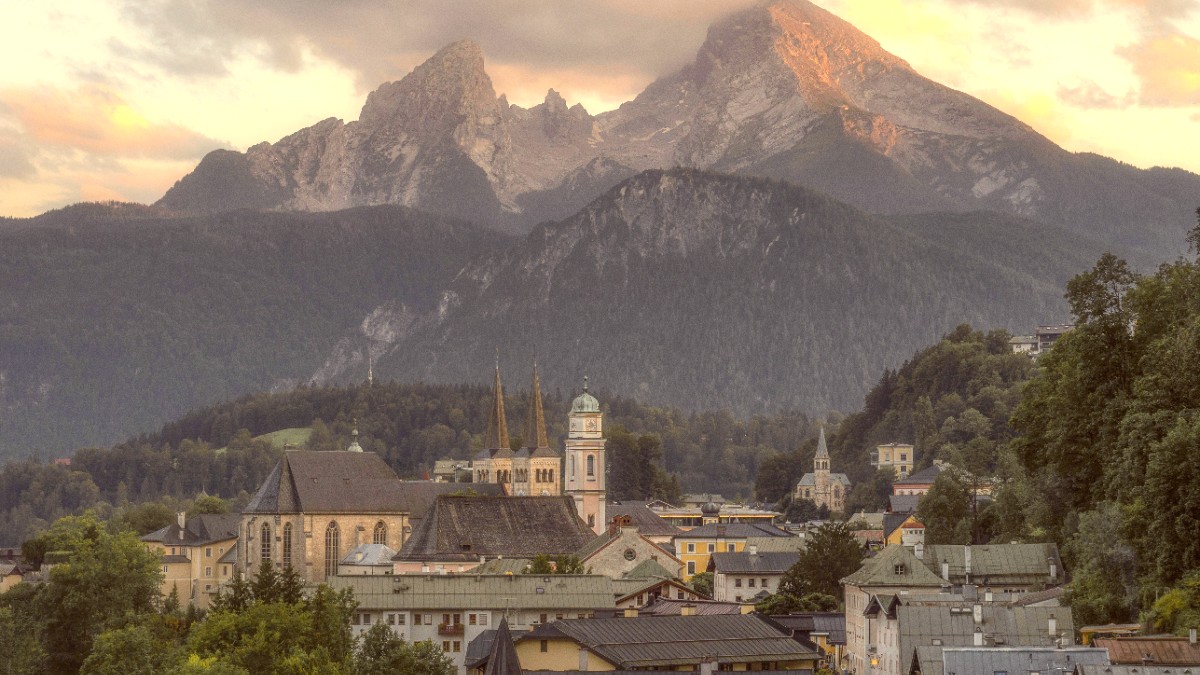
Bavarian Alps, Germany
Berchtesgaden sits in the southeastern part of Germany, directly on the border with Austria. It occupies a position within the Berchtesgadener Land district, surrounded by the Bavarian Alps. Mountains form a natural amphitheater around the town. The Watzmann massif, Germany's third-highest mountain, dominates the southern view.
Berchtesgaden's history began in the 12th century with the establishment of the Augustinian Provostry of Berchtesgaden. This religious foundation gradually gained power, becoming an independent principality within the Holy Roman Empire. The region's wealth and influence grew from salt mining, which started around 1517. The salt trade shaped the local economy and culture for centuries, leaving a legacy visible in the town's architecture and the continued operation of the Salt Mine for visitors.
In the 20th century, the Obersalzberg area above Berchtesgaden gained a different kind of recognition. It became the site of Adolf Hitler's mountain retreat, the Berghof, and a complex for the Nazi Party elite. This period left a lasting mark on the region's history. Today, the Dokumentation Obersalzberg museum offers information about this dark chapter, making an opportunity for education and remembrance.
This quick reference provides a baseline for what to expect when you arrive in this alpine town. It highlights the main draws and practical details for your travel preparations.
Tourism, salt mining (historical and ongoing tours), forestry.
Southeastern Bavaria, Germany, near the Austrian border.
Approximately 570 meters (1,870 feet) above sea level in the town center.
Approximately 7,700 (as of 2023).
Euro (€).
German (Bavarian dialect widely spoken).
Königssee, Berchtesgaden National Park, Eagle's Nest (Kehlsteinhaus), Salt Mine (Salzbergwerk Berchtesgaden), Watzmann mountain, Dokumentation Obersalzberg.
The region's geography provides a range of activities, from easy walks in the valleys to challenging climbs on the highest peaks.
After World War II, Berchtesgaden transitioned into a popular tourist destination, recognized globally for its natural beauty and its layered historical sites. The town has embraced its dual identity, providing both natural exploration and historical reflection.
The region’s wealth and influence grew from salt mining, which started around 1517. The salt trade shaped the local economy and culture for centuries, leaving a legacy visible in the town's architecture and the continued operation of the Salt Mine for visitors.
Berchtesgaden National Park covers much of the surrounding mountainous terrain. This park prioritizes nature conservation. Its landscapes include high peaks, deep valleys, dense forests, and alpine meadows. Rivers and streams flow down from the mountains, feeding into the lakes.
The town has embraced its dual identity, providing both natural exploration and historical reflection.
Germany's sole alpine national park, prioritizing nature conservation.
Experience centuries of history, from religious foundations to a significant 20th-century site.
The region offers activities from easy walks in the valleys to challenging mountain climbs on the highest peaks.
Berchtesgaden occupies a position within the Berchtesgadener Land district, surrounded by the Bavarian Alps. Mountains form a natural amphitheater around the town. The Watzmann massif, Germany's third-highest mountain, dominates the southern view.